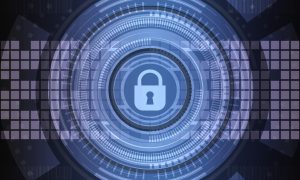Keylogger is a term often used when debating privacy and data security in the cybersecurity sphere. In this article, you will learn what a keylogger is about, the types of keyloggers that are available, how they work, and, therefore, some potential dangers from them. With the evolution of the digital landscape, knowledge is becoming increasingly important for everyone using a computer or mobile device. Because they can potentially access the most sensitive information, keyloggers can also carry some of the harsher implications associated with them, should you fall victim. Furthermore, with new advancements in cyber threats appearing each year, users need to keep track of how keyloggers work and methods of self-protection.

Defining Keyloggers
Software or hardware is designed to record each keystroke on a keyboard. What is a keylogger? Even with more advanced loggers that record mouse movements and screenshots, the primary purpose of a keylogger is to track keystrokes. Keyloggers can be used for risks, such as monitoring or troubleshooting. For example, businesses might use keyloggers to monitor compliance with company policies on using computing equipment or to gather evidence of wrongdoing. This duality of keyloggers, in the end, is why you must weigh their necessity carefully and what their implementation can ultimately lead to. While keyloggers offer great security solutions, they can also be used to complete unethical tasks. Hence, policies must be put in place to regulate the use of these programs.
Types of Keyloggers
There are two primary types of keyloggers. This includes:
Software Keyloggers
Keyloggers in software form are simply programs that run on an operating system. Users can install them for many legitimate reasons — keeping tabs on your kids’ internet use or monitoring an employee’s productivity. In practice, keyloggers in malicious software are much more severe, as they can resend the information to unauthorised third parties over the network or the internet. Behind the scenes, these programs have a stealth mode that allows them to operate without revealing themselves. They can result in many problems, such as identity theft and monetary loss, rather than private information theft.
Hardware Keyloggers
In an attack on clean hardware, a physical device called a hardware keylogger is installed between a keyboard and a computer. These are generally small, inconspicuous devices that can be deployed almost invisibly. However, hardware keyloggers can snag data off of the computer without any use of the operating system, and therefore, they are difficult to notice and uninstall. When installed on a machine, they can besiege that machine to start recording keystrokes and save their log until the attacker comes again. And because they don’t show up as a software signature, victims may not even know their keystrokes are being monitored – which raises the risk of unauthorised access to sensitive data.
How Keyloggers Work
Keyloggers work by recording keystrokes as they are entered. This is usually done by something called “hooking” inside malware that intercepts the keystrokes before they reach the application. The collected data is saved in a file or sent to an external server under the attacker’s control. The user is usually completely unaware of this secret operation, and thus, software keyloggers can be particularly harmful. As a result, they will be able to capture sensitive information (passwords, credit card numbers, and personal messages), leading to serious privacy violations.
Similarly, hardware keyloggers intercept the signals from the keyboard to the computer. What is a keylogger? They save the recorded data in their internal memory, and an attacker can control it later on. These devices can be as simple as a small plug between the keyboard and the computer, making them almost impossible to notice. Furthermore, hardware keyloggers can still function even when the OS is reinstalled or the related software is uninstalled, meaning that they may pose a persistent danger to security.
Risks Associated with Keyloggers
While the use of keyloggers can be dangerous for several reasons, including:
- Identity Theft: Keyloggers help to capture personal information like usernames, passwords, and credit card details, which helps with ID theft.
- Financial loss: Information collected by keyloggers allows attackers to gain control over bank accounts, make unauthorised transfers, and commit other financial crimes.
- Loss of Privacy: Keyloggers can also affect privacy, revealing personal conversations and sensitive information that can lead to considerable privacy oversights.
- Reputation Damage: For businesses having a keylogger, confidential information can leak with all the consequences from reputational issues it brings to a damaged status on the market.
Prevention and Protection
Here’s why you need to defend against keyloggers:
- Use Antivirus Software: Implement well-known antivirus applications that come with anti-spyware, as this will help to sniff out and eliminate keyloggers.
- Regularly Update Software: Maintain your operating system and keep every application up to date to patch the security issues that keyloggers exploit.
- Be Cautious with Downloads: Avoid downloading software outside the Mac App Store or websites you know are genuine, and never click on unsolicited email links.
- Utilise Two-Factor Authentication: Even if the attackers get your password, they need something else to access that account.
Conclusion
Keyloggers may be extremely dangerous because they supply criminals with the freedom to manage their laptops when they work on essential tasks. Today, in the digital world, knowing what a keylogger is and how it operates is critical. Being proactive and vigilant in protecting themselves from these unseen threats can help individuals and businesses be safer. Some of the best practices are keeping all software up to date, using strong passwords, and installing a cybersecurity solution that offers complete protection against all advanced malware. In addition, teaching users to recognise signs of keylogger activity could enable them to take prompt action if they suspect that keystroke logging is occurring.
